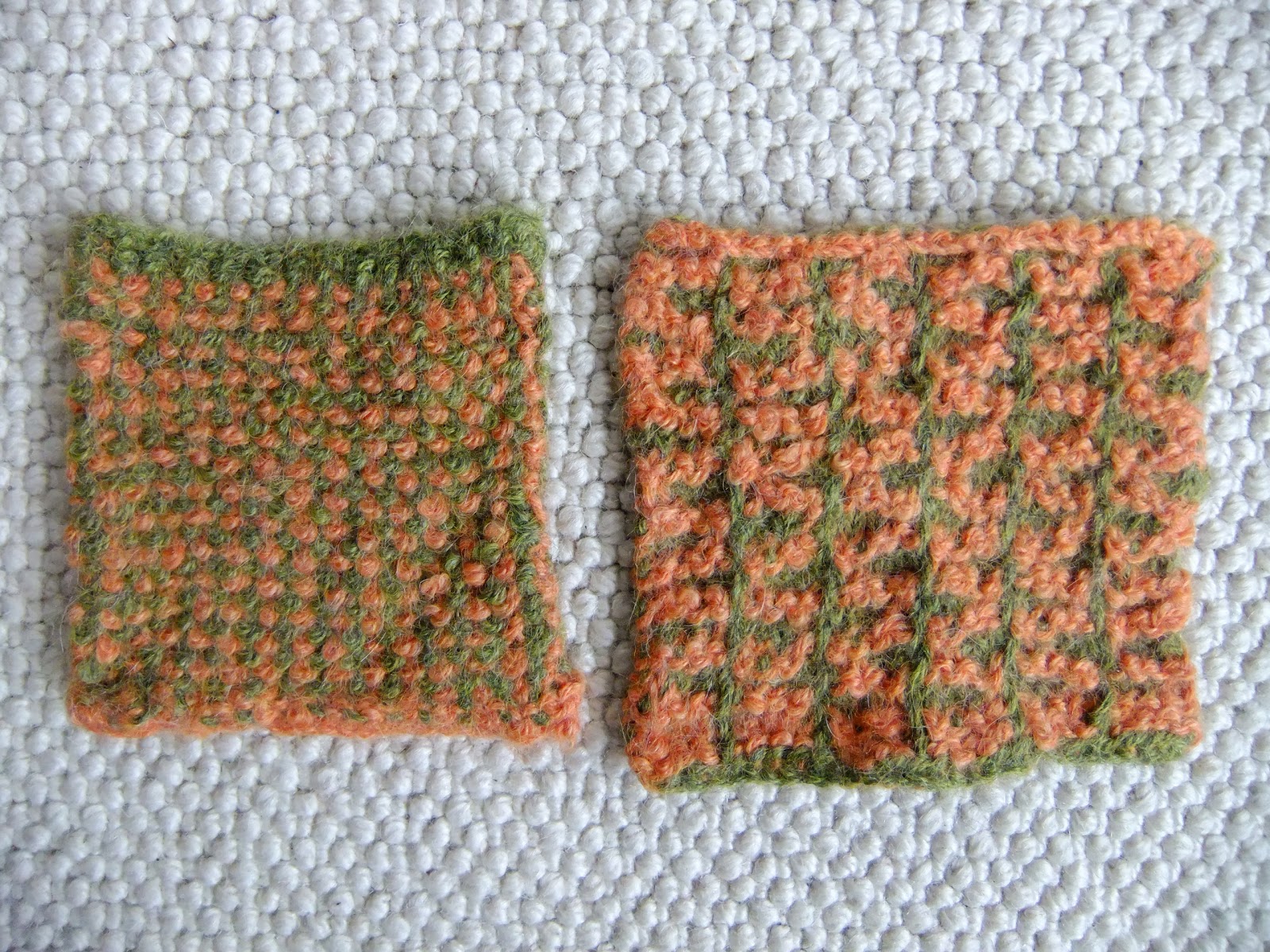This experiment was an attempt to take a soft fabric and recreate a strongly 3-dimensional form. The starting point was a seashell.
White cotton calico was chosen as the fabric as it is pliable but stable and has good crease and fold retention properties. The fabric was dipped in a diluted PVA solution and moulded by hand until it resembled the shell shape. As it dried, more moulding could take place to create the finer details. When the moulded shell was dry it had more definition than I would ideally have liked but retained most of the key shapes.
Thoughts: A finer fabric such as muslin might have been better for retaining finer details of the shape. I'm thinking here of the use of muslin fabrics to make plaster casts. On which point, it would be interesting to repeat this exercise with plaster of paris and muslin.
The next two samples were stitch-based. The first was an experiment with free-machine stitching, something I haven't done much of. I chose a piece of coral, collected while on holiday. It has a fascinatingly complex and detailed surface that I thought would be very challenging to intepret.
I worked on a cotton calico fabric and I was very happy with the result!
For the next piece in this exercise I wanted to work again with stitch but this time in a more 3-D format. I sandwiched a thin layer of polyester wadding in between two pieces of cotton calico. For the design, I used a sketch based on an Indian earring.
I traced the key features of the sketch and photocopied it several times. I then played with various arrangements of the shapes, cutting out sections, simplifying and creating different patterns until I was happy with the level of detail and pattern formation. These were some of the variants.
I finally settled on the following combination as offering an interesting shape, detailed but not too complex and nicely balanced.
I traced the final design, secured the fabric and wadding in an embroidery hoop with the tracing on top and free-machined over the tracing paper.
Once the design was finished, I ripped away the tracing paper leaving the finished design.
And on removing from the hoop the wadding relaxed giving a softly padded result.
Thoughts: The stitching needs more practice! This was quite a detailed piece and working in a small hoop was quite challenging. Although I like the subtle effect of the stitching using a same-colour thread, it would be interesting to see how using a contrasting thread, or perhaps a metallic thread, would change the overall look.
For this stage, I concluded with two samples of fabric that i created from knitted swatches which were subsequently felted in the washing machine. The swatches were knitted in two colours using the mosaic (slipstitch) knitting technique. This creates a springy, firm fabric with a good texture.
Not normally desirable but, having inadvertently felted a pair of hand-knitted socks in the washing machine, I have since been experimenting with the idea of knitting as a fabric that can be sewn, cut and treated more like a traditional woven structure.
For these samples I chose alpaca which isn't the traditional fibre of choice for felting having structure more akin to hair (protein-based with no lanolin and a hollow core). Merino is the most popular due to the fine micron count and short staple allowing for easy interlocking of the fibres. However, I knew from past experience that if the water is hot enough and there is sufficient agitation, it produces and excellent fabric. UK washing machines are not ideal for felting as they generally have a wash cycle that can't be interrupted to check the degree of felting. Old-style, top-loading UK machines are still much more common in the US and these are much better as the cycle can be interrupted at any time and hotter water added, more soap etc. This gives much greater control over the density and drape of the fabric that can be achieved.
Nonetheless, I gave it a try and found that two hot washes were required to achieve the firm, dense fabric I was looking for in these pieces. There is undoubtedly endless scope for further experimentation, however, it could prove costly as, once felted, the process cannot of course be reversed! Hand-felting knits is possible, but there is often damage to the surface of the fibre due to the rolling and rubbing necessary to achieve felting (it also takes ages!). I think I shall have to scour freegle for an old toploader!


















